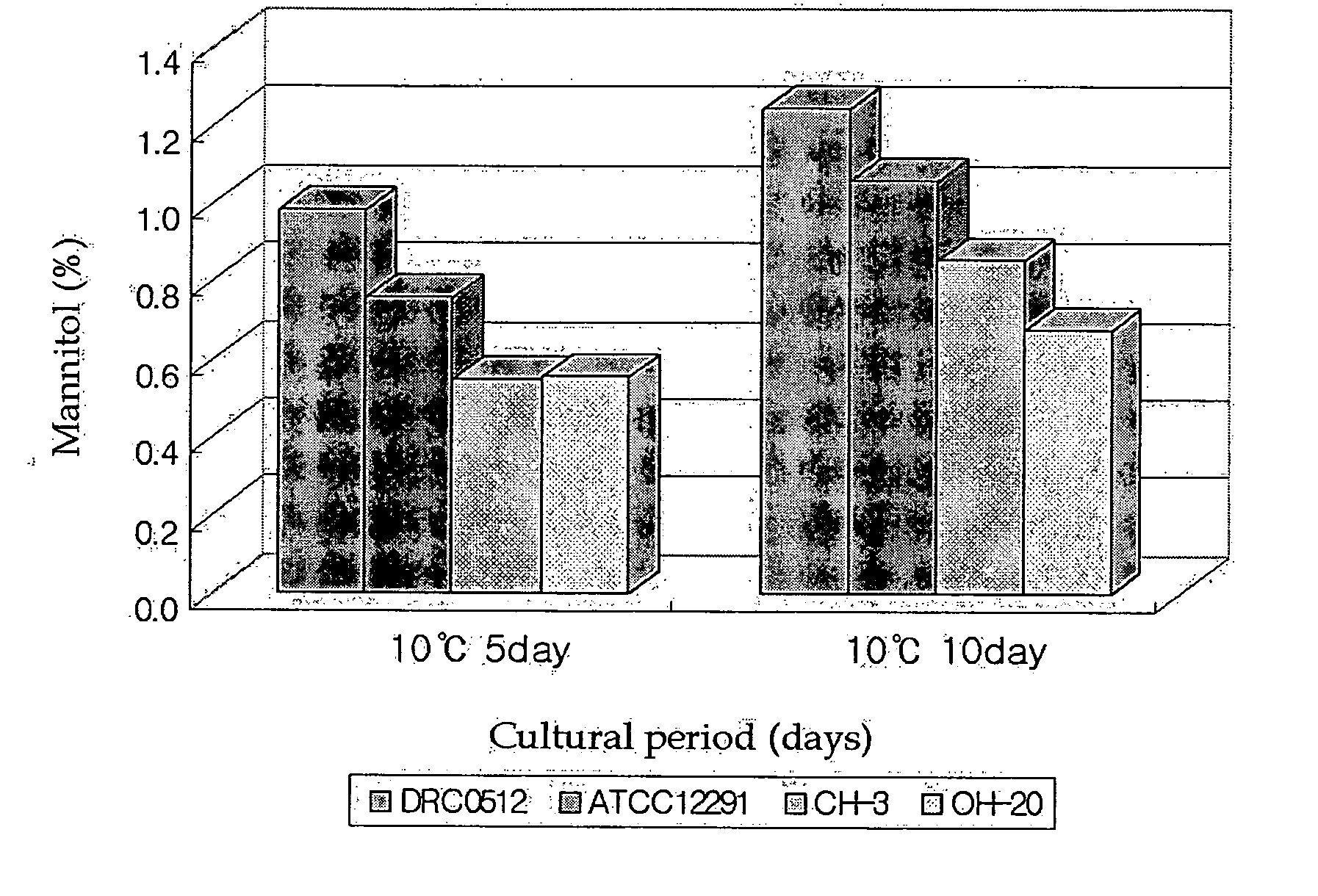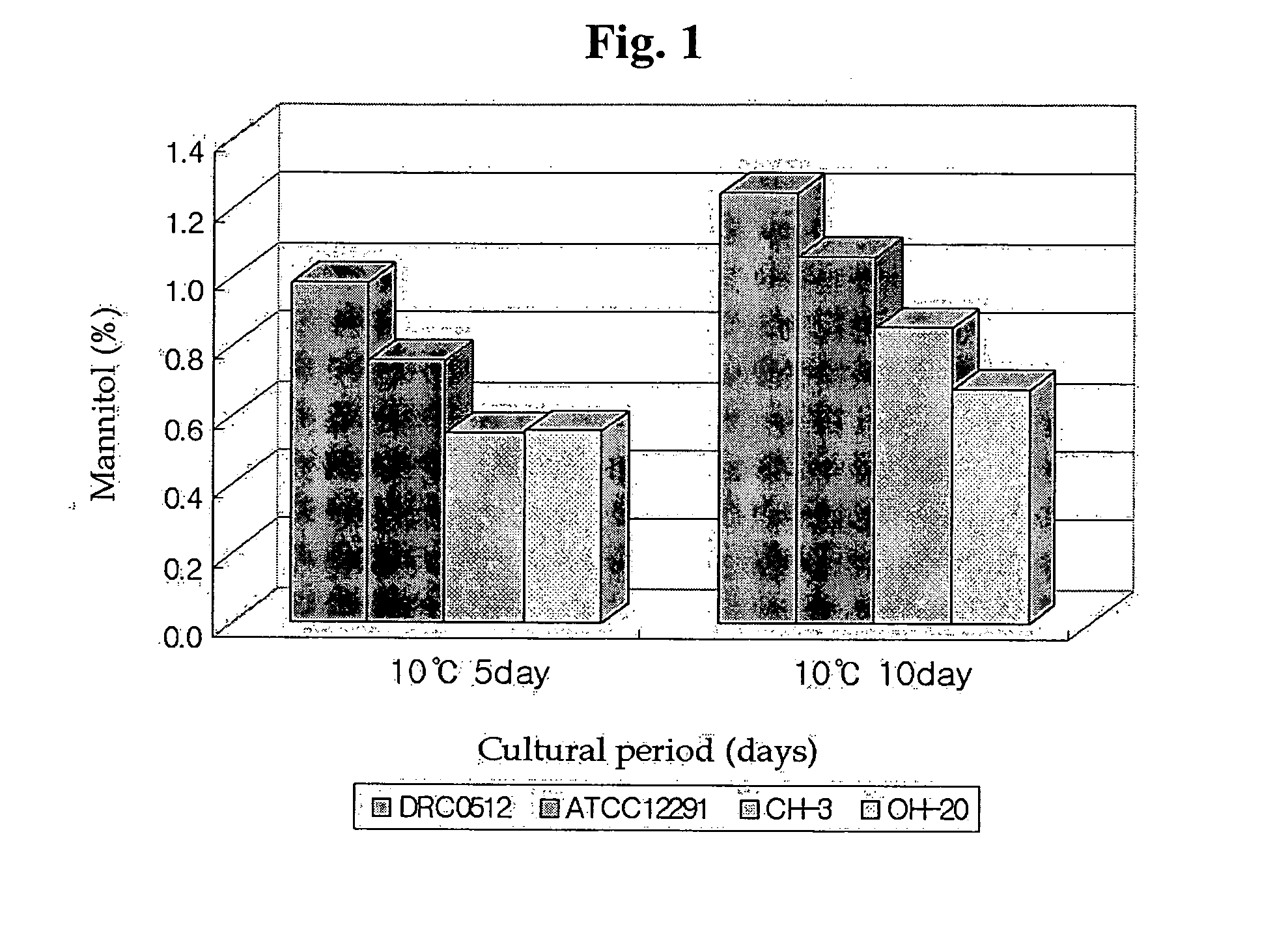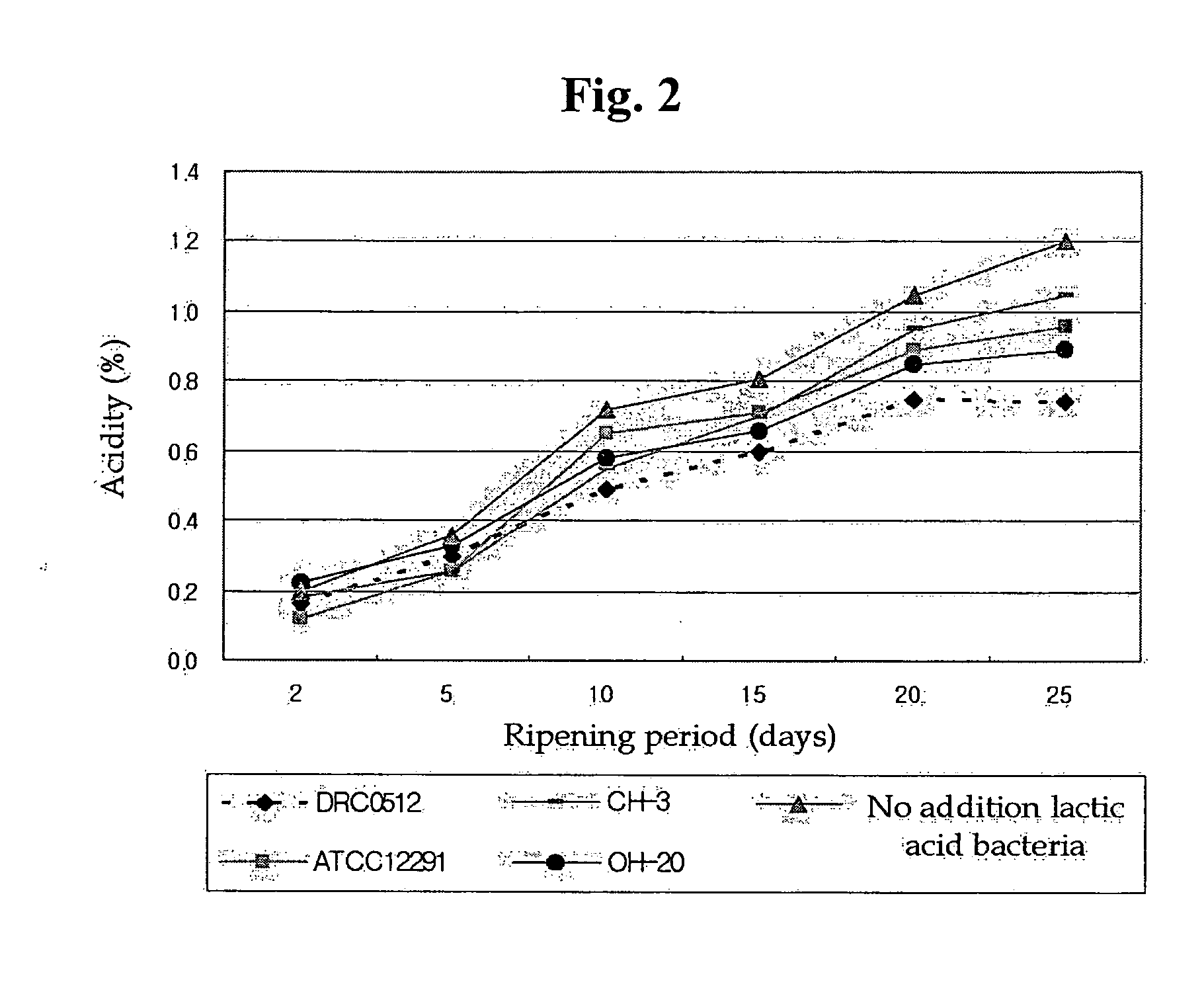Acid tolerant leuconostoc mesenteroides with excellent mannitol productivity and method for producing a kimchi using the same
a technology of mannitol and lactic acid bacteria, which is applied in the field of acid-tolerant lactic acid bacteria with excellent mannitol productivity, can solve the problems of sour kimchi taste, difficulty in maintaining the quality or taste of commercial kimchi at a constant level, and inability to continuously maintain the taste of kimchi
- Summary
- Abstract
- Description
- Claims
- Application Information
AI Technical Summary
Benefits of technology
Problems solved by technology
Method used
Image
Examples
example 1
Preparation of Lactic Acid Bacteria with Acid Tolerance and Excellent Mannitol Productivity
[0039] Preparation of Kimchi Sample for Isolation of Lactic Acid Bacteria, and Isolation of Lactic Acid Bacteria Therefrom
[0040]Sensory evaluation was performed on various Kimchis produced by a conventional production method of Kimchi, and Kimchi evaluated to be the best in taste was selected. The Kimchi was subjected to sensory evaluation with ripening at a low temperature of −1° C., and a Kimchi sample collected at a time point showing the best flavor was used as a Kimchi sample for the isolation of lactic acid bacteria. The Kimchi sample was diluted 10-fold with 0.85% saline solution, and 0.1 ml of the diluted sample was inoculated into each well of a PES (phenylethyl alcohol sucrose) agar medium plate (comprising 5 g tryptone, 0.5 g yeast extract, 20 g sucrose, 2 g ammonium sulfate, 1 g dipotassium phosphate, 0.244 g magnesium sulfate, 2.5 ml phenylethyl alcohol and 15 g agar in 1 liter of...
example 2
Identification of Lactic Acid Bacteria Isolated and Improved in Example 1
[0046] Analysis by Bergy's Manual of Systematic Bacteriology
[0047]The lactic acid bacteria (improved strain 2) finally selected in Example 1 was isolated as single colonies and then examined for morphological and biochemical properties according to Bergy's Manual of systematic bacteriology, and subjected to Gram staining. As a result, it could be found that the isolated strain is a gram-positive strain and has the shape of bacillus.
[0048] Analysis with API System
[0049]The isolated strain was identified with an API system (La Balme-les-Grottes, France). First, the colony was taken using sterilized platinum and then suspended in 2 ml of sterilized distilled water. The suspension was suspended in 5 ml of sterilized distilled water at the concentration of MccFaland Standard Solution No. 2 provided in the API 50CH kit (BioMerieux, France). The suspension was homogenized in a liquid medium in the API 50CH kit and ino...
example 3
Comparison of Acid Tolerance Between Inventive Lactic Acid Bacteria and Prior Lactic Acid Bacteria
[0053]The comparison of acid tolerance between inventive Leuconostoc mesenteroides DRC0512 and prior lactic acid bacteria was performed. As the prior lactic acid bacteria strains (control groups), a Leuconostoc mesenteroides strain (KCCM-11325) and a Leuconostoc sp. strain (KFCC-10774) were used.
[0054]Each of the lactic acid bacteria strains was inoculated into 10 ml of each of MRS broths adjusted to pH 3.2, 3.5, 4.0 and 5.0, respectively with lactic acid. The inoculated bacteria strains were incubated at 25° C. for 72 hours while the observation of their growth or non-growth was performed. The results are shown in Table 3 below.
TABLE 3Comparison results for acid toleranceInventive LeuconostocLeuconostocLeuconostocmesenteroidesmesenteroides strainsp. strainPHDRC0512(KCCM-11325)(KFCC-10774)5.0+++4.0+++3.5+−−3.2−−−+: grown; and −: non-grown
[0055]As can be seen in Table 3 above, Leuconosto...
PUM
| Property | Measurement | Unit |
|---|---|---|
| pH | aaaaa | aaaaa |
| temperature | aaaaa | aaaaa |
| temperature | aaaaa | aaaaa |
Abstract
Description
Claims
Application Information
 Login to View More
Login to View More - R&D
- Intellectual Property
- Life Sciences
- Materials
- Tech Scout
- Unparalleled Data Quality
- Higher Quality Content
- 60% Fewer Hallucinations
Browse by: Latest US Patents, China's latest patents, Technical Efficacy Thesaurus, Application Domain, Technology Topic, Popular Technical Reports.
© 2025 PatSnap. All rights reserved.Legal|Privacy policy|Modern Slavery Act Transparency Statement|Sitemap|About US| Contact US: help@patsnap.com



